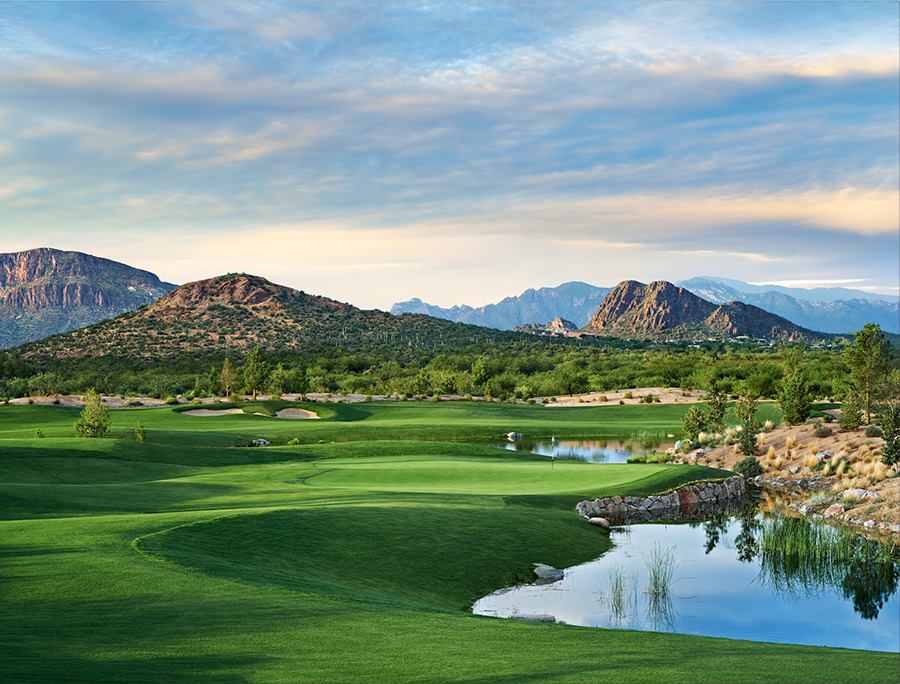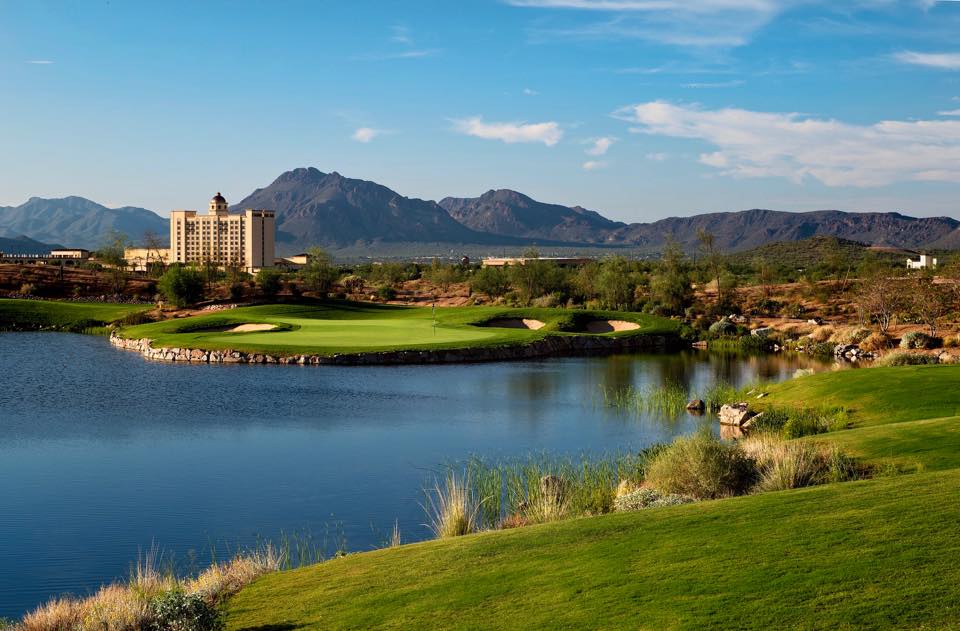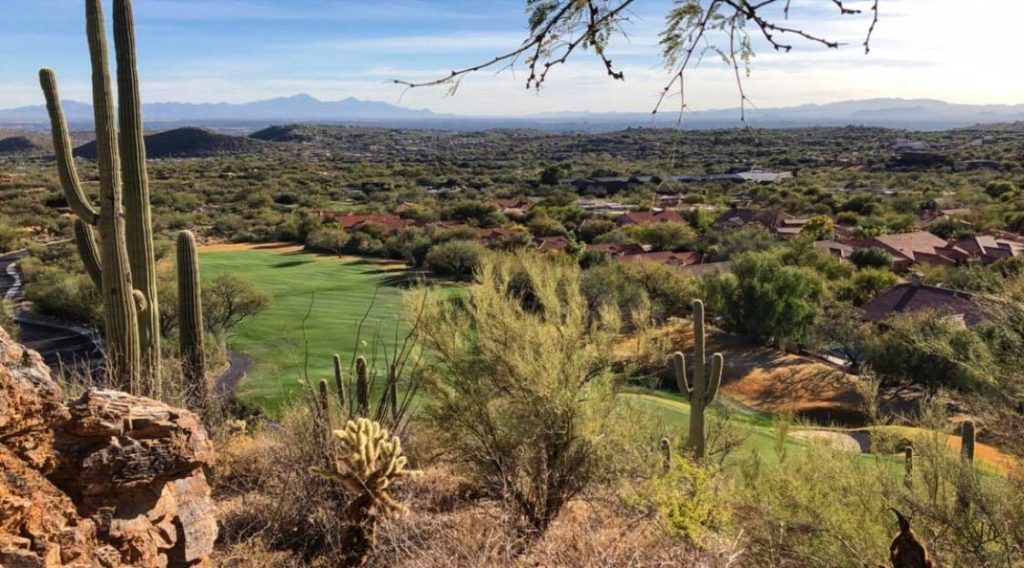
When thinking about playing golf this time of year, teeing it up in Arizona comes readily to mind on the short list of destinations where green grass and mostly temperate climates can help me through the Winter and cold weather blues.
And where many golfers book trips to the Valley of the Sun and its courses in and around Phoenix and Scottsdale, it’s easy to focus instead on the Oro Valley, the Santa Catalina Mountains and the courses in Tucson, about two hours to the south.
While Tucson may be Arizona’s “second city” it takes no backseat to its larger sibling to the north when it comes to great golf and plenty of it.
There are more than 40 facilities throughout the region including premium courses routed by the likes of Tom Fazio, Bob Cupp, Bruce Devlin-Robert von Hagge, Tom Lehman and Notah Begay, assuring that players of all skill levels will find plenty of challenges and make loads of memories.
On a recent trip to Tucson, the Travel Caddie played six courses at four facilities in three days, and just scratched the surface on the great golf in southern Arizona. Here’s a look at three of them.

Ventana Canyon (top), Sewailo Golf Club (above)
A tale of two nines at Sewailo Golf Club
We started off the golf marathon at Sewailo Golf Club at Casino Del Sol, about a 15-minute drive west of the Tucson airport. Opened in 2013 and designed by Ty Butler and Begay, the course’s edges feature more than 40,000 native plants and are highlighted by 14 acres of lakes, all a stark contrast to the surrounding natural desert landscape.
Sewailo Golf Club is more parkland than typical Arizona target golf thanks to the Yaqui tribe’s access to the Central Arizona Project water. It has been recognized as one of the state’s top courses since the day it opened for play.
It can be a handful, playing as a par-72 and at 7,283 windswept yards from its back set of five tees. There are numerous arroyos and streams that come into play, and the course’s elevation changes and natural hazards add to the challenge. The putting surfaces at Sewailo Golf Club are kept smooth and they are surprisingly receptive of approach shots despite some severe undulations.
The front-nine at Sewailo Golf Club measures about 200 yards shorter than the back and is the easier side, with plenty of opportunities for birdies and confidence building.
You will need it on the way home. The back side begins with the course’s most-talked-about hole, the double-dogleg 638-yard par-5 10th, and is followed by a murderer’s row of tests – namely the 504-yard par-4 11th, the 242-yard par-3 13th, and the 584-yard par-5 14th.
Sewailo is definitely a track where course management is important and conviction on every shot is essential. The course is even better the second time around, so book a stay at the sumptuous casino-resort and play it again and again.

Sewailo Golf Club
Double the fun at Ventana Canyon
There are two splendid Fazio-designed courses at Ventana Canyon Club and Lodge, and both offer a unique blend of challenge and playability. Both the Mountain and the Canyon courses meander from one from hole to hole and allow each player to test his or her ability in the shadow of the Santa Catalina Mountains.
Ventana Canyon’s Mountain Course takes advantage of plenty of elevation changes and desert terrain. Playing from five sets of tees, the longest of which are carded at 6,907 yards, it features one of the most photographed holes in the West, the short par-3 third that’s tucked into the rugged rocks and played across a canyon of cacti. The tee offers a breathtaking panorama that stretches across the desert into Mexico.
While the third hole was spectacular, I was equally wowed by the stretch that followed, beginning with the par-5 fourth, the short par-4 fifth and the par-4 seventh, which asks for a lengthy carry over desert landscape and ends with a putting surface protected on both sides by deep sand.
Although it is shorter, the Mountain Course is more difficult than the Canyon Course, as nearly every tee on the course forces a desert carry and the fairways tend to be narrow and offer uneven lies. The beauty of the mountain backdrop and the desert can be both distracting and intimidating, especially from the back tees.
I’ve played a lot, and I mean a lot, of Fazio courses, and I have to say that the Mountain Course might be my favorite.
The Canyon Course, which plays at 6,819 yards from the tournament tees, is routed in the foothills beneath the mountains, with the front nine winding down through Esperero Canyon. Expect the course to play a little longer because of a series of uphill approach shots.
As you turn to the back nine, look for the iconic Whaleback Rock behind the green of the par-4 10th. Although the Canyon Course is more playable for the inexperienced golfer than its sister course in the Mountains, it offers a significant challenge to even the most seasoned golfer. The Canyon offers generous fairways and picturesque views throughout.
If you play here during monsoon season you are likely to witness water rushing through the desert washes.
The quality of the golf at Ventana Canyon is off the charts. There’s a reason that these two spectacular courses are on nearly every list of the nation’s very best.
Ventana Canyon also was my home-away-from-home for the trip, as I slept each night in a plush bed in an expansive suite at the 50-unit Lodge at Ventana Canyon, which was originally built for the club’s private membership. The club still has exclusive rights to one of the courses each day, meaning in order to play both, you need to spend two days at the resort – nice work if you can get it.

Ventana Canyon

